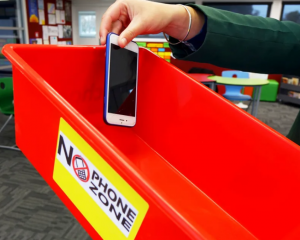Alongside a dock at the Port of Tauranga, men in orange overalls are busy preparing for their next battle in New Zealand's biggest salvage operation.
They are employees of US-based Resolve Salvage and Fire, who, nearly three years after the grounding of the containership Rena, are still toiling in the catastrophe's aftermath.
Tonnes of equipment and machinery, including a pair of heavy-duty cranes, have been loaded on to a huge barge ahead of the next big job in a salvage operation which has already cost hundreds of millions of dollars.
All of this gear will be used to clean up the underwater junkyard that today surrounds the sunken, battered containership.
Thousands of tonnes of debris are strewn across the sea floor around the Astrolabe Reef, where the Rena has been undergoing an underwater transformation from ship to scrapheap.
"There's absolutely everything down there," the project's deputy director, Brad Tong, said.
Amid the tangled mess lie the remains of hundreds of shipping containers, scrap metal, car parts, tyres, aluminium ingots, cardboard, trampoline coils, some bags of magnesium oxide and several tonnes of plastic beads.
Between now and Christmas, salvors expect to recover around 4000 tonnes of it.
Large chunks, located by divers working at 30m to 40m below the surface, will be hauled from the bottom using large hydraulic grabs.
In a single day, they can expect to retrieve about 50 tonnes of scrap, in loads as large as six tonnes at a time.
Once back at port, the debris will be destined for recycling or landfill.
Over the past 17 days, the same barge that was used to carve the Rena's towering accommodation block into pieces has been converted for the new task.
Mr Tong expected to put it into action by next week.
"Conceptually, it's been in the making for a long time, and now it's about putting it all together quickly."
When the Herald visited yesterday, salvors were putting the last touches to the 91m-long RMG 1000 and transferring hefty mooring equipment that would hold it in place.
Its 25-strong crew worked at the mercy of swell conditions.
"The weather has a huge effect on us ... once you've got into the spread, it's not easy to get back out, and you've really got to watch the vessel's movement," Mr Tong said.
"The reef comes up from 80m, it's susceptible to a lot of swell, and obviously its distance from the entrance of Tauranga Harbour means you are exposed to 360 degrees of weather patterns."
The salvors expect this phase to be more straightforward than the previous logistical headaches the Rena has thrown at them. So far, they've included a critical race to pump Marmite-like oil from fuel holds, carefully plucking away containers stacked in high, leaning towers, and whittling the ship's bow down amid roiling waters.
Mr Tong said each job came with its own hurdles, and what they now faced was no different.
"It's challenging ... but it's not unbeatable."
- By Jamie Morton of the New Zealand Herald










